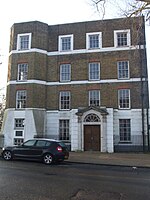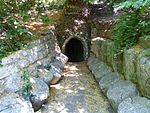Richmond, The American International University in London

Richmond American University London is a private university in London, United Kingdom. Richmond was founded in 1972, by British educator Cyril Taylor. The university awards US degrees from the American state of Delaware, where Richmond is accredited by the Middle States Commission on Higher Education. Until 2018, Richmond's UK degrees were awarded by the Open University; but from the 2018/2019 academic year, Richmond has been able to grant its own UK degrees, after receiving Taught Degree Awarding Powers from the Quality Assurance Agency for Higher Education. This mean that all students at Richmond gain both a UK and US degree studying one programme.
Excerpt from the Wikipedia article Richmond, The American International University in London (License: CC BY-SA 3.0, Authors, Images).Richmond, The American International University in London
Queen's Road, London Petersham (London Borough of Richmond upon Thames)
Geographical coordinates (GPS) Address Website External links Nearby Places Show on map
Geographical coordinates (GPS)
| Latitude | Longitude |
|---|---|
| N 51.4523 ° | E -0.2966 ° |
Address
Richmond University
Queen's Road
TW10 6JP London, Petersham (London Borough of Richmond upon Thames)
England, United Kingdom
Open on Google Maps










